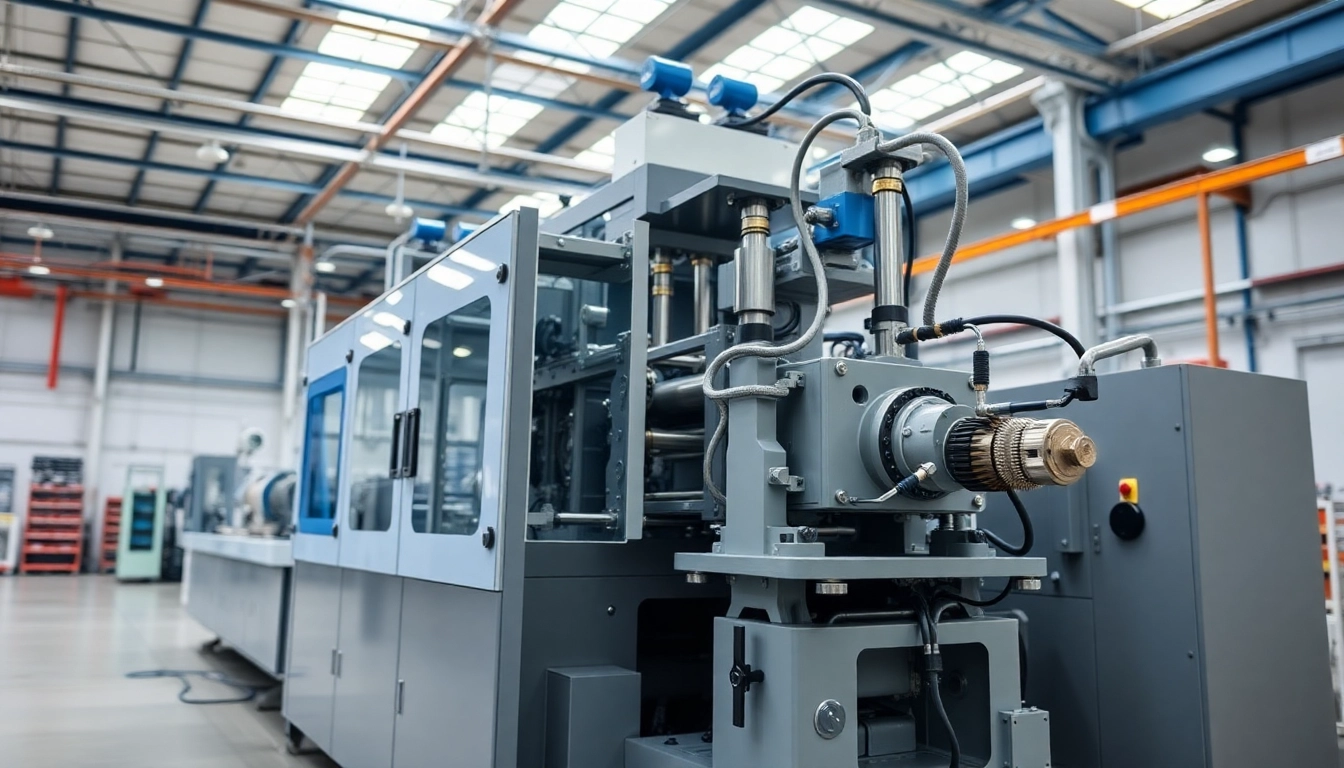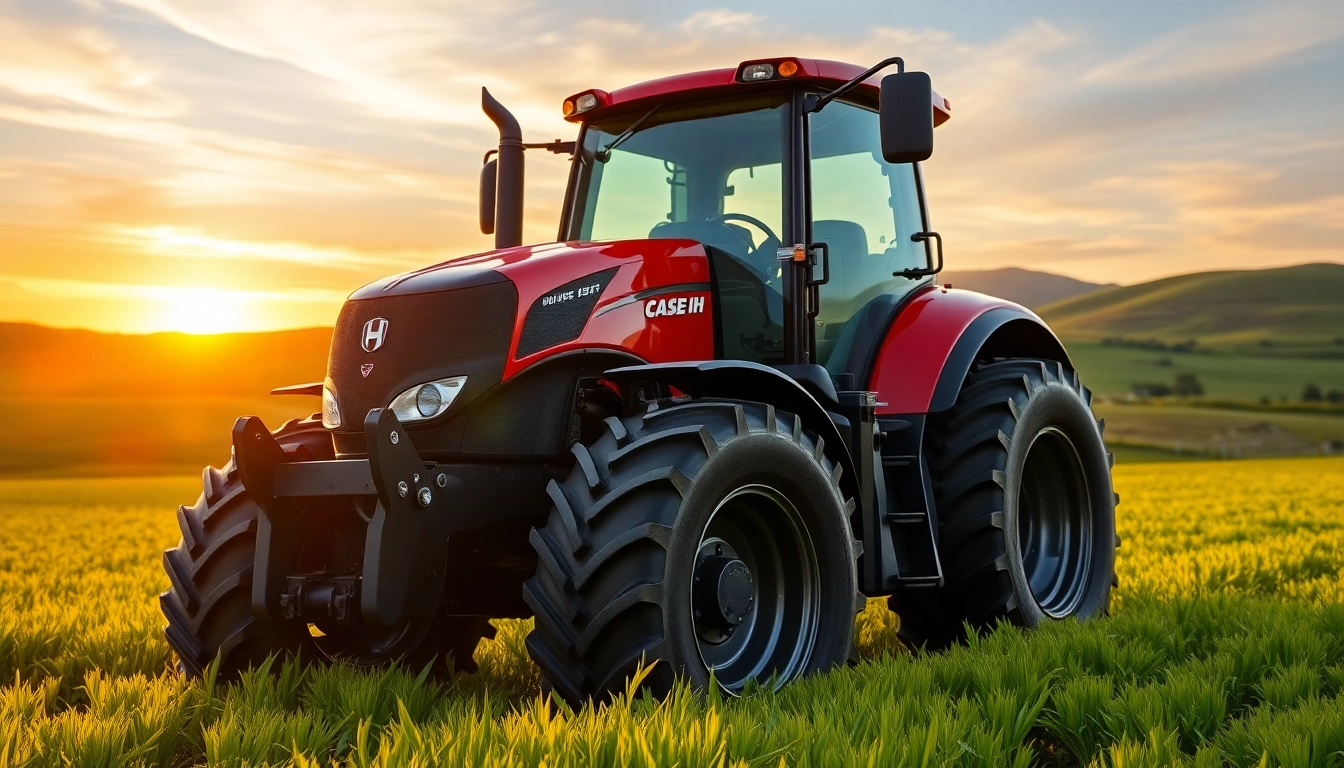Understanding Blow Molding Machines
In the world of manufacturing, Blow Molding Machines play a pivotal role in producing a vast array of plastic products with precision and efficiency. These machines have revolutionized the way we create complex shapes and hollow structures in plastic, from bottles to automotive components. This article will delve into the workings, types, and applications of blow molding machines, providing you with a comprehensive understanding of these essential tools in modern manufacturing.
What is a Blow Molding Machine?
A blow molding machine is a specialized equipment used in the manufacturing of hollow plastic products. The process involves heating plastic until it becomes malleable and then using air pressure to inflate the plastic into a mold to create the required shape. This method is particularly efficient for producing high volumes of identical items, like containers, automotive parts, and toys. The key components of a blow molding machine include an extrusion or injection system, molds, cooling systems, and control interfaces that oversee the operation.
Types of Blow Molding Processes
Blow molding can be divided into three primary processes: extrusion blow molding (EBM), injection blow molding (IBM), and injection stretch blow molding (ISBM). Each of these methods has unique merits suited for different applications.
Extrusion Blow Molding (EBM)
This process involves extruding a parison (hollow tube of plastic) vertically and then placing it into a mold. The mold is then closed, and air is blown into the parison, expanding it to fill the mold. EBM is ideal for producing large containers like barrels, as well as smaller bottles. Its advantages include lower costs and higher production speeds. It primarily suits large-sized products but may lack the precision found in other molding types.
Injection Blow Molding (IBM)
IBM combines two processes: injection and blow molding. It begins by injecting molten plastic into a mold to form a preform, which is then heated and inflated into the final shape within a blow mold. This method is best suited for complex shapes and thinner walls, which require high precision, making it ideal for manufacturing high-quality containers and bottles, particularly in the cosmetics and food industries.
Injection Stretch Blow Molding (ISBM)
The ISBM process enhances the properties of products by stretching them during the blow molding phase. It uses preforms similar to the IBM process but involves an additional stretching step. This technique improves the clarity and strength of finished products, making it especially appealing for producing PET bottles used in beverages. It fosters excellent barrier properties and an enhanced shelf-life for food products.
Applications of Blow Molding Machines in Industry
Blow molding machines are indispensable in various industries, including packaging, automotive, and consumer goods. Each industry leverages the technology to meet specific needs.
Packaging Industry
In packaging, blow molding machines allow for the efficient production of lightweight, durable bottles and containers. Companies prioritize this method for items like shampoo bottles, detergent containers, and food packaging, as it provides cost-effective solutions without compromising quality.
Automotive Industry
The automotive sector utilizes blow molding to produce components such as fuel tanks, air ducts, and other lightweight parts. These parts are essential for improving fuel efficiency and reducing the overall weight of vehicles.
Consumer Goods
Consumer goods manufacturing also benefits from blow molding technology, with products ranging from toys to household items produced rapidly at scale. The flexibility of blow molding enables manufacturers to create unique designs that meet consumer demands for innovation and variety.
Key Components of Blow Molding Machines
Understanding the components that make up blow molding machines is essential for anyone looking to invest in this technology or optimize their existing operations. Each part plays a crucial role in the overall functionality.
Extruder Systems and Their Importance
The extruder system is the heart of blow molding machines, responsible for melting and forming the plastic material into a parison. The quality of the extruder system is paramount, as it directly affects the consistency of the parison and the quality of the final product. A reliable extruder will maintain steady temperatures and uniform material flow, both critical for achieving desired properties in the finished products.
Heating and Cooling Mechanisms Explained
Proper heating and cooling are vital in the blow molding process. During the heating phase, precise temperature control is essential to ensure that the plastic is properly melted without degradation. Cooling mechanisms then ensure that the molded plastic can retain its shape post-production. These systems often utilize water or air cooling techniques, and advancements in technology allow for more efficient cooling methods that reduce cycle time and enhance productivity.
Mold Types and Their Utilization
Molds are critical components in blow molding machinery, determining the shape and size of the final product. The two primary types include:
- Static Molds: Often used for high-volume production where the shape does not change. These molds are efficient and durable.
- Rotary Molds: Used in applications that require high-speed production. Rotary molds allow for continuous filling and faster production cycles.
Investing in quality molds optimized for the specific production needs can enhance production efficiency and reduce cycle times significantly.
Choosing the Right Blow Molding Machine
Selecting the right blow molding machine is a critical decision that can affect operational efficiency and product quality. Several factors must be considered when making this choice.
Criteria for Selecting Blow Molding Equipment
When evaluating potential blow molding machines, manufacturers should consider criteria such as:
- Production Volume: The expected output will help dictate the type and size of the machine required.
- Material Compatibility: Different machines accommodate various types of plastics, and it’s essential to match the correct machine to the material being used.
- Mold Availability: Ensure that appropriate molds are accessible for the intended production items.
- Budget: Evaluate both the initial capital investment and the long-term operational costs when selecting a machine.
Cost Considerations for Optimal Investment
Investing in a blow molding machine involves significant financial considerations. While it’s tempted to choose a less expensive option, it’s essential to weigh this against the machine’s operational capabilities and efficiency. The cost of ownership includes factors such as maintenance, energy consumption, and the ability to adapt to changes in production requirements.
For example, while a cheaper option may appear attractive at first, it may lead to high operational costs and inefficiencies in the long run. Understanding the total cost of ownership ensures a more informed investment decision.
Comparing Different Manufacturers and Models
Each manufacturer offers various models of blow molding machines, each designed for different purposes and efficiencies. Conducting thorough comparisons is fundamental. Look for reviews, case studies, and testimonials that provide insight into the performance and reliability of specific models.
Evaluate the technological advancements offered by different manufacturers, including automation features, energy-efficient designs, and the availability of after-sales support and service contracts. An informed decision based on comparative analysis can save time, money, and resources in the future.
Performance Optimization
Optimizing the performance of blow molding machines is essential for maximizing output and minimizing waste. Continuous improvement requires a focus on performance indicators, efficiency, and maintenance practices.
Key Performance Indicators in Blow Molding
Establishing performance metrics is crucial to understanding a machine’s efficiency. Key Performance Indicators (KPIs) to track may include:
- Cycle Time: The time taken to produce a single unit directly influences productivity levels.
- Material Waste: Measuring the waste generated during production helps identify areas for improvement.
- Downtime: Minimizing machine downtime through efficient scheduling and maintenance can yield significant productivity gains.
- Output Quality: Regular monitoring of product quality ensures consistency and customer satisfaction.
Enhancing Production Efficiency
Improving production efficiency requires a multi-faceted approach. Consider implementing the following strategies:
- Process Automation: Adopt automated solutions that streamline operations, reduce human error, and improve cycle times.
- Regular Maintenance: Establish a routine maintenance schedule to reduce unexpected breakdowns and prolong equipment lifespan.
- Employee Training: Invest in training programs for staff to ensure they are proficient in operating machinery and understanding processes, which can enhance productivity.
- Data Analytics: Utilize data from machine operations to identify bottlenecks and optimize workflows.
Maintenance Best Practices for Longevity
Proper maintenance is critical for prolonging the lifespan of blow molding machines and ensuring optimal performance. Best practices include:
- Regular Cleaning: Keep machines clean to prevent dust and debris from interfering with operations.
- Lubrication: Implement a rigorous lubrication schedule for moving parts to prevent wear and tear.
- Periodic Inspections: Conduct thorough inspections regularly to catch potential issues before they result in significant downtime.
- Documentation: Maintain detailed records of all maintenance and repairs, which aids in assessing machine performance over time.
Future Trends in Blow Molding Technology
The blow molding industry is at the forefront of technological advancement, adapting to changing market demands and sustainability initiatives. Understanding future trends is crucial for staying competitive and meeting consumer expectations.
Innovations in Automation and Control
The future of blow molding technology lies in increased automation and advanced control systems. Automated machinery reduces the need for human intervention, enhances production speed, and minimizes errors. Industry 4.0 technologies, including IoT integration and real-time monitoring systems, offer unprecedented control over operations, enabling manufacturers to adjust parameters on-the-fly for optimal performance.
Sustainability and Eco-Friendly Options
As companies strive to minimize their environmental impact, sustainability is becoming a core focus in the blow molding industry. Innovations in material science are yielding biodegradable and recyclable plastics suitable for blow molding. Additionally, manufacturers are adopting energy-efficient machines that consume less power and use fewer resources throughout the production process. Implementing sustainable practices not only broadens a company’s appeal to eco-conscious consumers but also helps comply with existing and evolving regulations.
Market Predictions and Industry Developments
Market predictions suggest that the demand for blow molding machines will continue to grow, driven by various sectors, including automotive, packaging, and consumer goods. Developments in smart manufacturing, customization, and rapid prototyping will likely shape the future landscape of the industry. As competition heightens, companies that leverage cutting-edge technology and address consumer demands will position themselves as leaders in the blow molding market.



